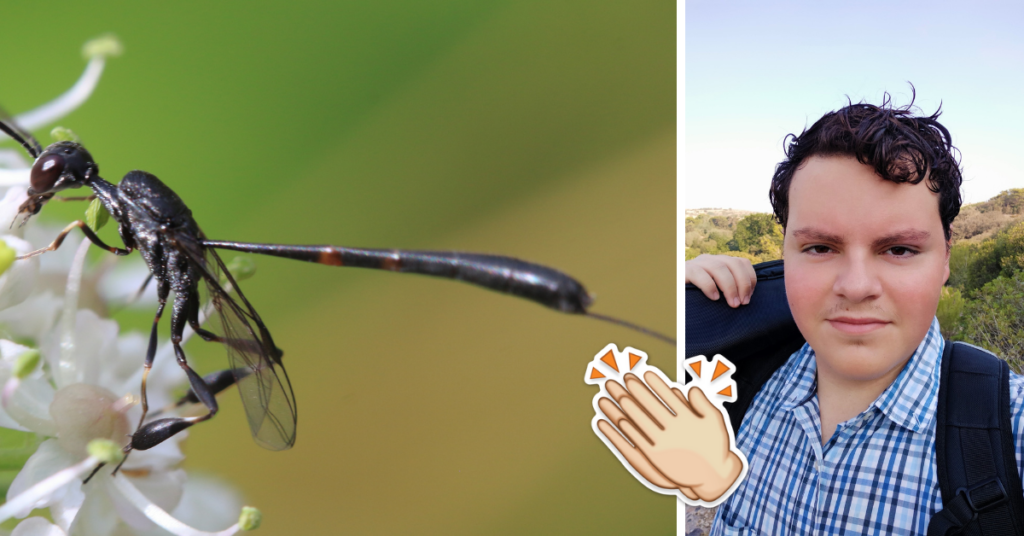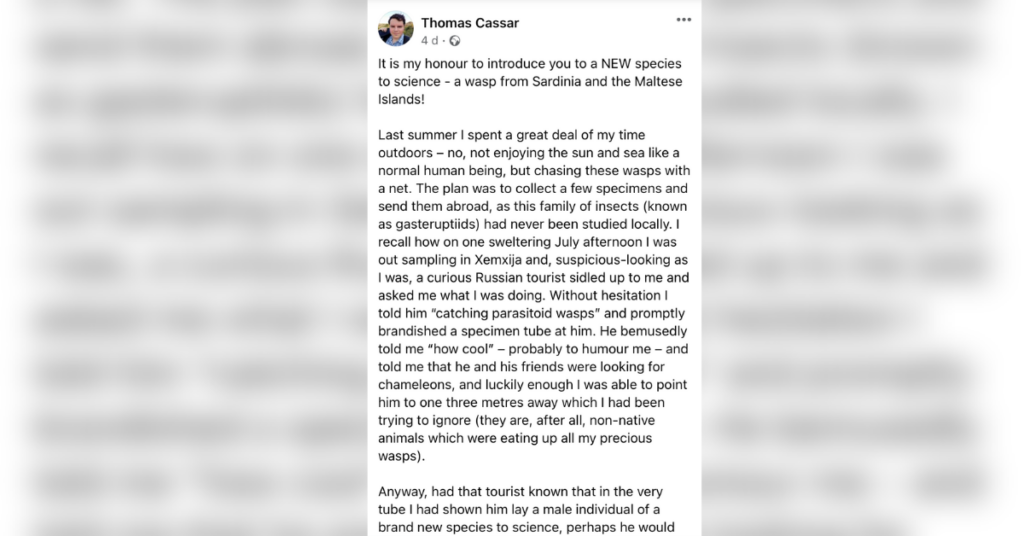Maltese Super Student Discovers New Wasp Species

University student Thomas Cassar has just introduced a new species to science, a wasp hailing from Sardinia and our very own Maltese Islands.
The young student took to Facebook to share his impressive discovery while using a colourful anecdote to make it more comprehensible for those of us who are slightly less scientifically inclined.

“Last summer I spent a great deal of my time outdoors – no, not enjoying the sun and sea like a normal human being, but chasing these wasps with a net,” he said.
His plan was to collect a few specimens and send them abroad since this particular family of insects, known as gasteruptiidae, had never been locally studied.
“I recall how on one sweltering July afternoon I was out sampling in Xemxija and, suspicious-looking as I was, a curious Russian tourist sidled up to me and asked me what I was doing,” Cassar recounted.
“Without hesitation I told him “catching parasitoid wasps” and promptly brandished a specimen tube at him. He bemusedly told me “how cool” – probably to humour me – and told me that he and his friends were looking for chameleons, and luckily enough I was able to point him to one three metres away which I had been trying to ignore (they are, after all, non-native animals which were eating up all my precious wasps),” he continued.
However, unbeknownst to the both of them, in that very tube lay a male individual of a brand new species to science.
“Had the tourist known that, perhaps he would have been a bit more interested.”

Cassar later realised that he was in possession of an undescribed new species to science that had been recently collected on the Italian island of Sardinia but remained “nameless and unknown”.
“Therefore, we agreed that it would be nice if we jointly published the description of this new species, together with the first account of the wasp family in Malta, and lo and behold, here is the paper!” Cassar enthusiastically revealed.
The student described the newly discovered gasteruptiid as “very slim, peculiar wasps, with a weird neck and hindlegs like 1970s bootcut jeans”.
The female wasps have a long tube “poking out of their bum (known as the ovipositor) which is used to probe deep into the nests of solitary bees”.
From here, the females lay an egg which hatches and the wasp’s larva either eats the bee’s eggs and larvae or eats the bee’s nectar and pollen stores, or both, “because who says no to food if it’s free?”
20-year-old Cassar told Lovin Malta about his surprise of the lack studies documented on this “photogenic” wasp family that was already known to inhabit the Maltese islands.
“To find a totally new species from Malta, shared with Sardinia, was fantastic,” the soon-to-be scientist said.
He then explained that from here, they will need to learn more about the species by asking a series of questions to “fill in knowledge gaps”.
Despite his enthusiasm, Cassar did not shy away from illustrating the disconcerting reality that surrounds the prosperity of such species’.
“However, the excitement of finding a new species is also met with a sobering fact; Malta is undergoing habitat loss at an alarming rate, and we might lose new species forever before we even know they exist.”
You can witness these mysterious specimens flying around the flowerheads of fennel at this time of year.
What do you think of Cassar’s discovery?
